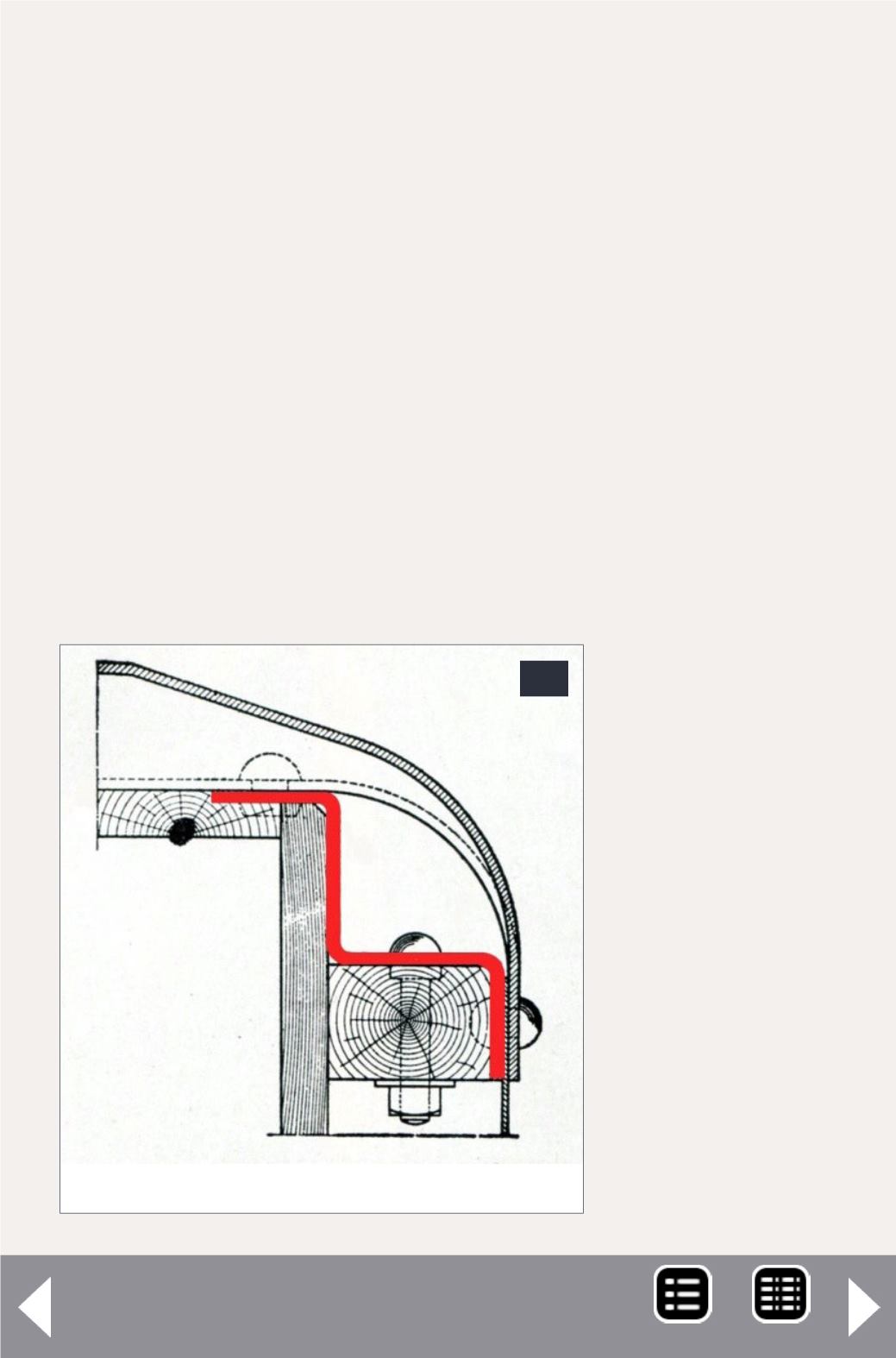
the sides filled the area between the ends of the main ribs [27,
28, and 29]. The ribs on the introductory design were formed
inward; however subsequent Dreadnaught ends were stamped
with the ribs formed outward. The upper panels of some
Dreadnaught ends were formed with shallower ribs than in the
lower, thicker sections [27]. The seam where the panels were
joined together with rivets was usually in the valley between
two main ribs [29], however, in some cases the riveted seam
was along the center of the outward corrugation [28].
The brand name, Dreadnaught, was an Americanization of the
British battleship HMS Dreadnought that was very much in the
31. The W-corner post was introduced in 1939 by
the Standard Railway Manufacturing Co. The intent
was to develop a stronger connection between
the ends
and sides.
The name is
somewhat
misleading
since the
‘W’ shaped
steel post
is internal.
The spotting
feature is the
round end
that wrapped
around the
corner and
attached to the
side of the car
[33 and 34].
Boxcar ends - 10
31
W-Section Corner Post
MRH-Oct 2014


